The Ultimate Guide to a Day Trip Through Yellowstone
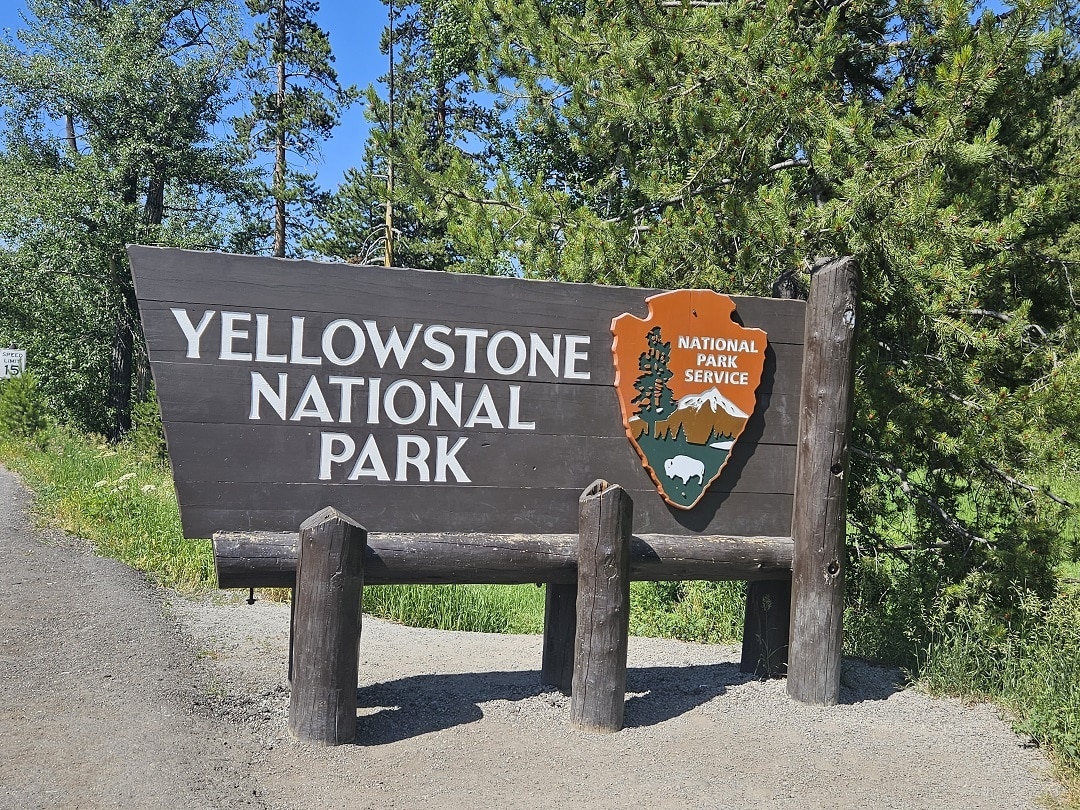
What would you do if you only had one day to visit Yellowstone National Park? Well you would plan to make the most of it and see as much as possible! A day trip through Yellowstone National Park can be an incredible experience, but keep in mind that Yellowstone is a vast park with many attractions, so you won’t be able to see everything in just one day. To fully explore all of Yellowstone you need a few days, but not everyone has all that time available.
Below you will find information on different driving routes through the park, things to see and other useful tips as you plan a day trip through Yellowstone. I guarantee you will find lots of useful information no matter which route you take.
Disclaimer: This post may include affiliate links. If you click one of them, I may receive a small commission at no extra cost to you.
History
Yellowstone National Park became the world’s first national park in 1872 by President Ulysses S Grant. With the park’s unique geological features, including geysers, hot springs and vast landscapes, Yellowstone was designated as a UNESCO World Heritage Site in 1978. Yellowstone is 2,219,789 acres in area and is predominantly located in Wyoming with only 3% in Montana and 1% in Idaho.
If you are wondering, the infamous “train station” from the TV Series Yellowstone, is actually based on a real location called the “Zone of Death” and is located on the Idaho section of the Park.
Indigenous Ties
Well before Yellowstone became a park , Native American people hunted, explored, fished, and used the resources of the land for living, medicinal and religious reasons. It is recognized to have historic connections to at least 27 tribes including Crow, Shoshone, Assiniboine and Sioux and Blackfeet. The Crow tribe called it the “land of the burning ground.”
The indigenous people tried to preserve the pristine wilderness that was untouched by human interference, until the park became a National Park in 1872 which marked the end of the indigenous presence within the boundaries of the park.
Wildlife
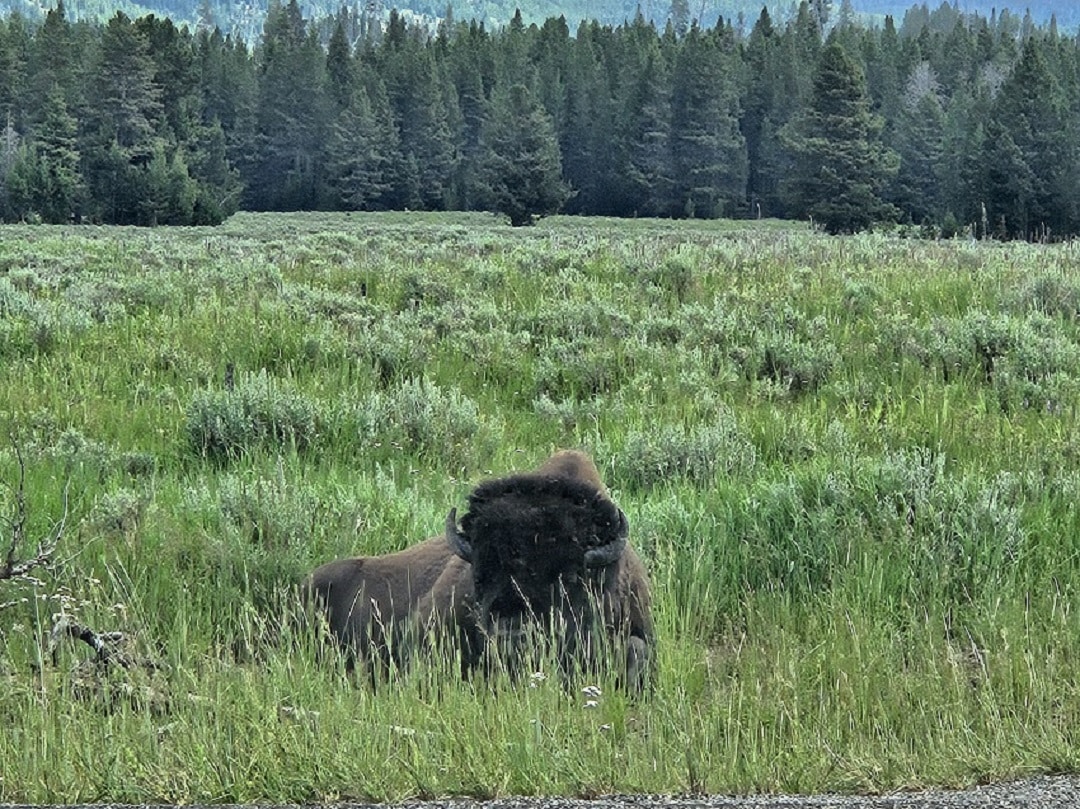
There is an abundance of wildlife that can be found within the park. 67 species of mammals, not including reptiles and amphibians, call the park it’s home.
The most common wildlife you could see are bison, elk, moose, bighorn sheep, mountain goats, pronghorn, white-tailed deer. If you are lucky (or unlucky) enough you may catch a glimpse of one of the predators found here, including black bears, grizzly bears, wolves, cougars or coyotes. We were lucky enough to see some bison on our drive through.
TIP: Keep a safe distance from ALL wildlife and be aware of your surroundings. If you are hiking in the park, carry bear spray. If you are driving through, stay in your car and respect the wildlife. Bring a pair of binoculars to admire nature from a distance.
With almost 300 species of birds located in the park, there is definitely a good chance you will have a sighting. Many of these species are migratory, so they pass through during the spring and summer months, some nesting in the park. I was lucky enough to find a pair of sandhill cranes when driving through which was a highlight of the trip for me!
TIP: View birds from a distance. The use of audio bird calls is illegal in the park.
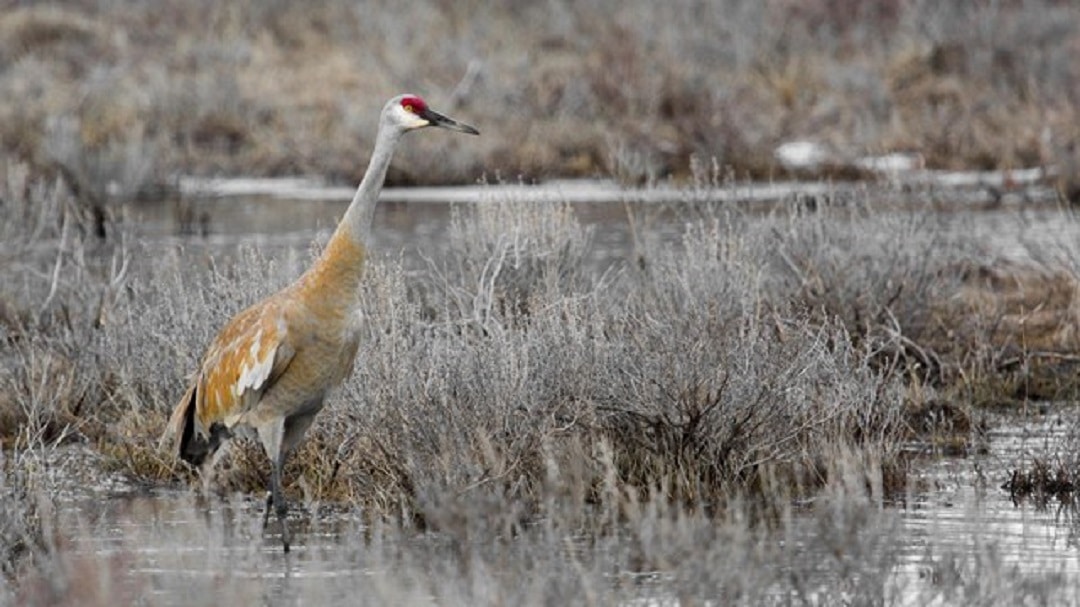
Planning Your Day Trip Through Yellowstone
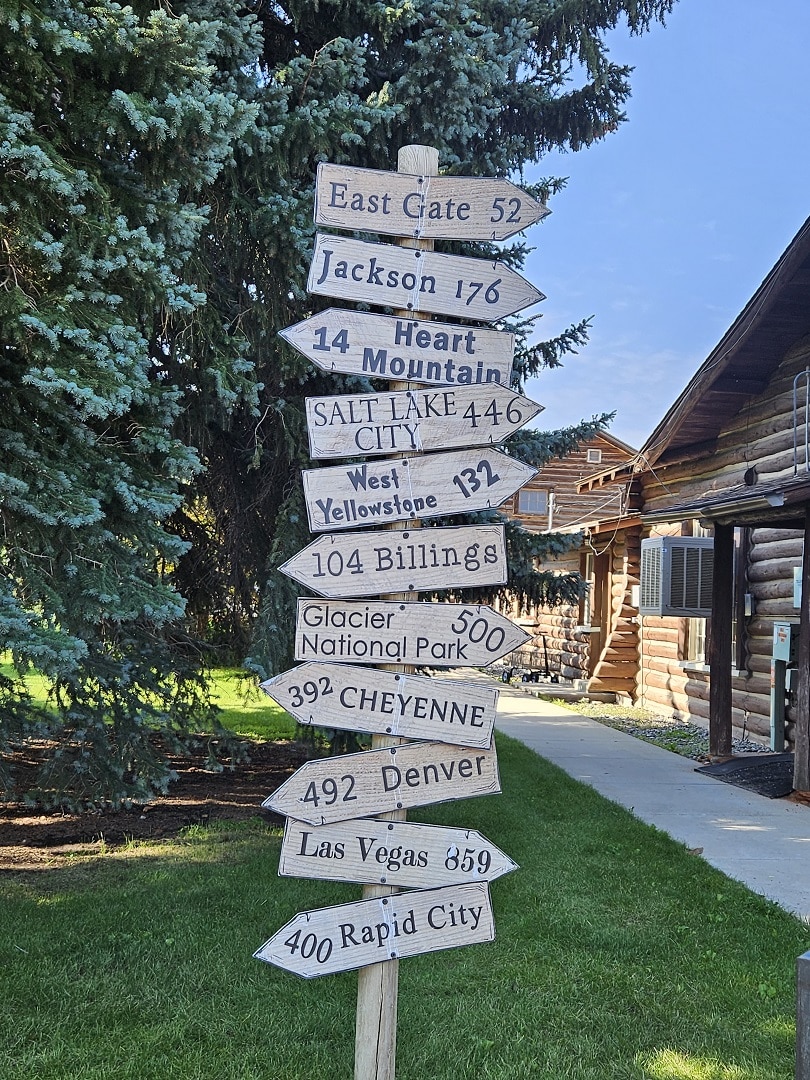
Hours of Operation & Access
Yellowstone National Park is open 24 hours a day, 365 days a year. During the summer, all the roads are open, but there is a good chance you will encounter construction like we did, which added an hour of delay. Many roads are closed during the late fall until early spring, so ensure you check the park roads when you are planning your day trip through Yellowstone.
Cell phone coverage is available but many areas are dead zones. So don’t rely on constant coverage the whole time in the park. It’s helpful to have a map of the park ahead of time, but you will receive one when you enter the park.
Fees
$35 per private vehicle for 7 days. For information on other fee options, click here. America the Beautiful pass holders, get the cost of entry into the park covered. It is recommended to buy your pass online in advance to stay time when entering the park.
Pets
A big deterrence to visiting Yellowstone National Park for some people is that dogs are not allowed in most areas of the park. The only places that your dog is allowed is in parking areas, campgrounds and along the roads. Dogs are not allowed on the hiking trails, day use and picnic areas or playgrounds.
If you visit Yellowstone during the summer, please ensure you keep them cool by keeping windows open, water available and keep your car running with the air conditioning on. We did find that the only place we could get relatively close with my pup, without any issues was Old Faithful.
Food Options
There are 20 restaurants throughout Yellowstone that offer grab and go, quick service or full service meals during your visit. If you want to connect with nature, then pack a picnic and visit one of the 52 day use or picnic areas located in the park. Note, there are no garbage or recycling bins in the picnic areas, so remember to carry out all garbage to prevent attracting wildlife.
Visitors Center
There are ten visitor and information centers located throughout the park. Visit a center to talk with an expert, learn about the park’s resources through the interpretive displays and exhibits, find maps and suggestions for the park and spend your money on the local tourist things that we all love to buy. I may have spent too much money in the gift shop!
Entrances to the Park
There are 5 entrances into the park and all of them lead to the Grand Loop Road, where you will find most of the main attractions. The Grand Loop is 142 miles (230 kms) but you wouldn’t have enough time to properly see all the landmarks. If you drive the Lower Loop you can see most of the main attractions. But it all depends on the time you have to spend in the park or if you are just driving through.
The speed limit maximum is 45 mph and slower in some areas. There are winding roads and often wildlife traffic blocks, so be prepared that you could spend the full day in the Park. There are a few gas stations in the park, but ensure you have a tank full of gas to avoid paying the higher prices in the park.
The below map shows you all the driving routes through the park, main attractions to see, distance and approximate times, assuming no major traffic delays.
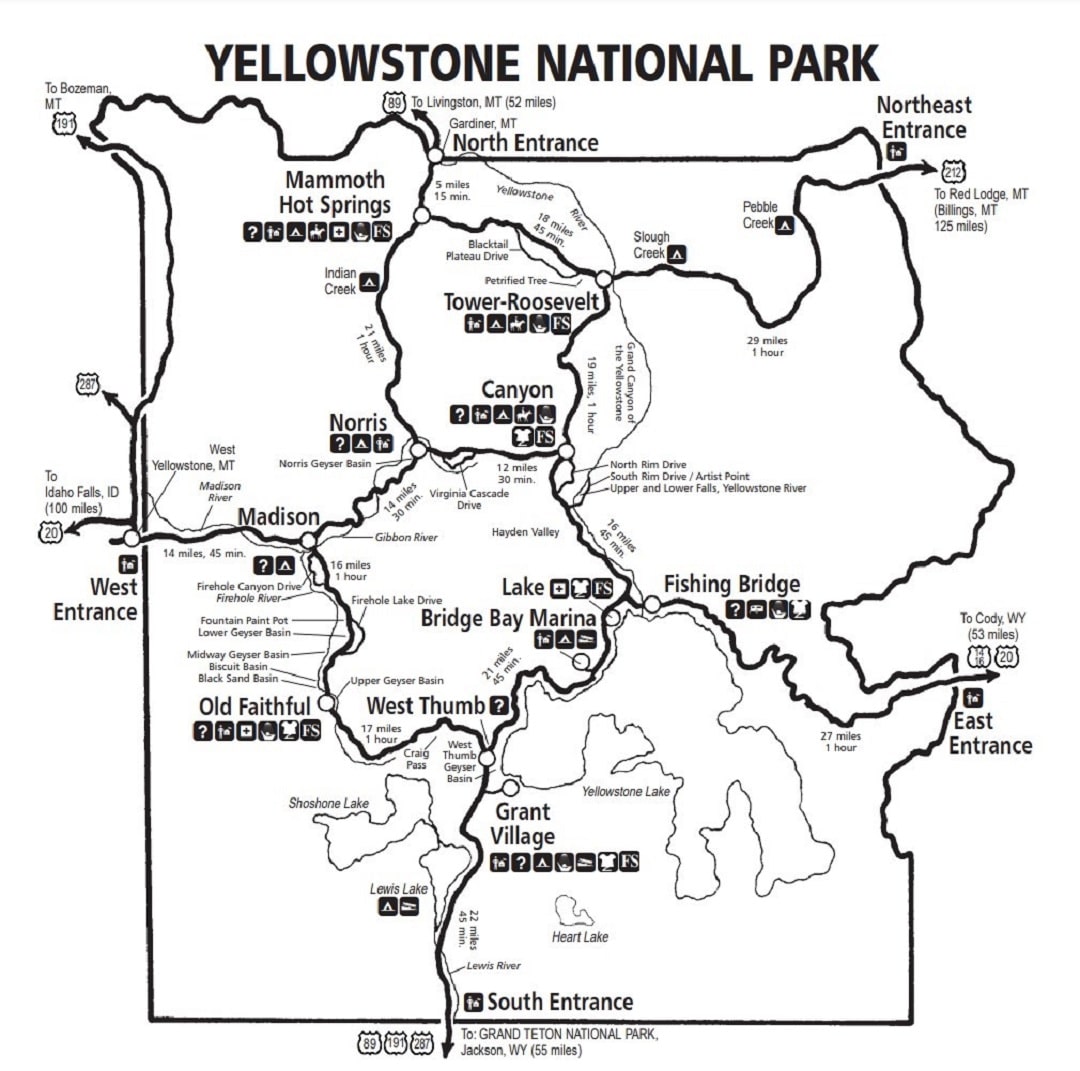
We entered from the East entrance (Cody, Wyoming) and exited from the North Entrance (Gardiner, Montana). We followed the routes, driving by Yellowstone Lake, Lake Bridge Bay Marina, West Thumb, Old Faithful, Madison, Norris and Mammoth Springs. Including our stops at attractions, visitor centre, lunch, and traffic delays, we spent 8 hours in the park.
TIP: Start your day early to make the most of your time. If you can arrive by 8:00am you will have a head start on the traffic.
Things to See
Yellowstone Lake
This is one of the best places for a quick stop, a short hike to the lake or exploring the lake by boat if you have time. Yellowstone lake is the largest high altitude (above 2130 m, or 7000 ft) , freshwater lake in North America with an elevation of 7,730 feet (2,357 metres) above sea level. It is best accessed when coming in from the East Entrance.
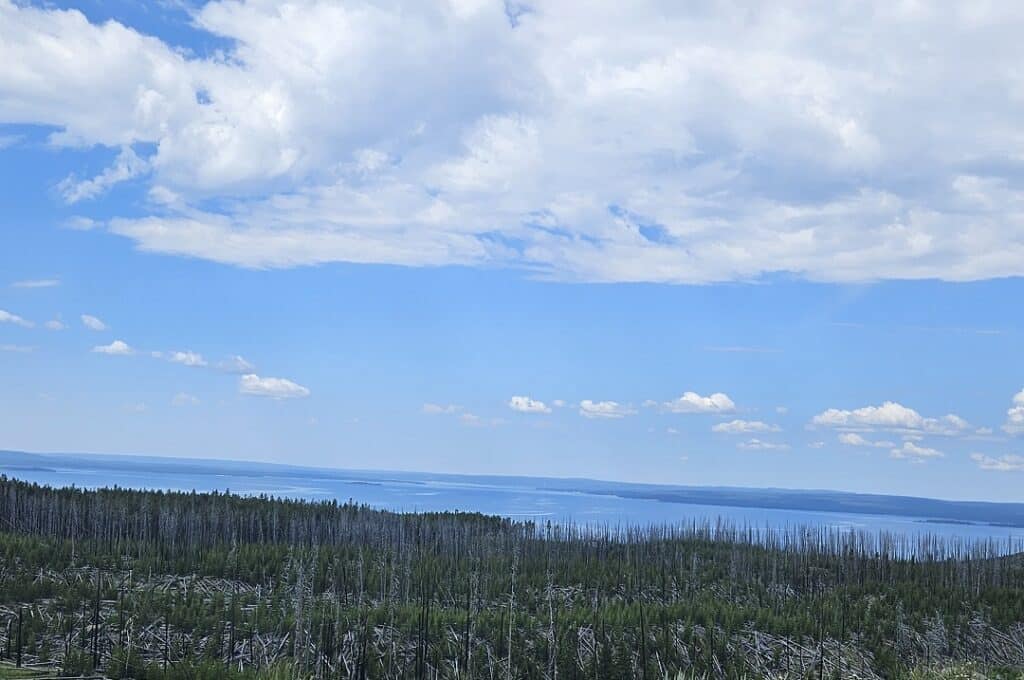
West Thumb Geyser Basin
Located just off the western edge of Yellowstone Lake, it is the smallest geothermal area of Yellowstone and should not be missed if possible. It’s a short walk to the basin, 0.6 miles (1.1kms). If you come in from the West entrance, it is a great introduction to the upcoming larger geysers you will see!
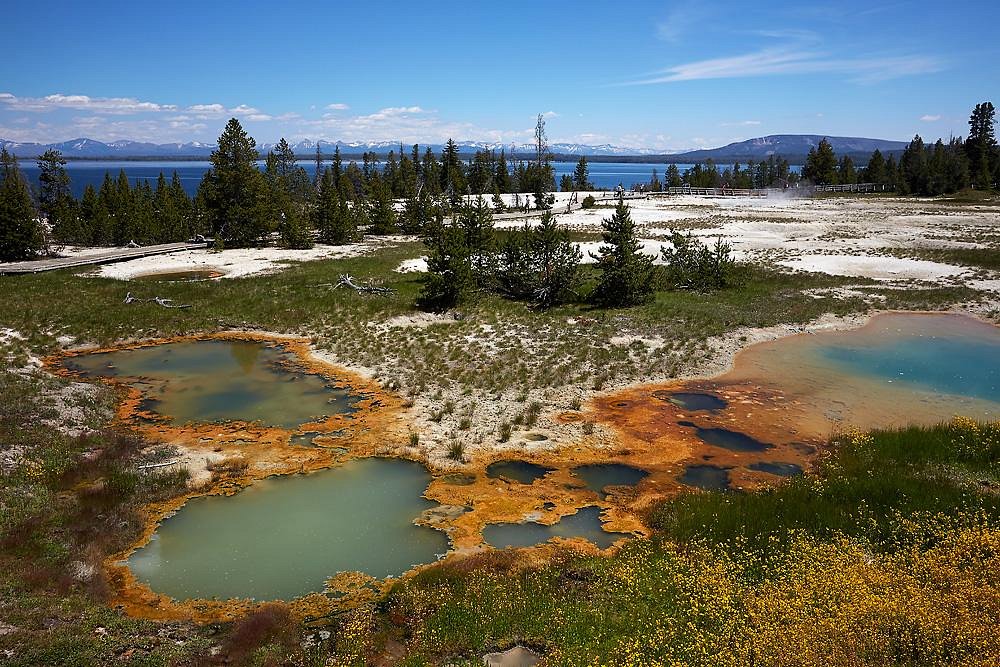
Old Faithful Geyser
Old Faithful is the biggest landmark in Yellowstone that everyone stops at. Shooting water up to 180 feet (55 metres) in height and spraying 3,700 to 8,400 gallons of water every time it erupts, Old Faithful is a sight to see. Interestingly, it is not the largest geyser in Yellowstone. That honor goes to the Steamboat geyser. But Old Faithful is the most predictable with eruptions occurring every 60 to 110 minutes. If you download the National Park Services App and add Yellowstone national park as a favorite, then you can see the Live Geyser Predictions to plan your trip.
If you get there and miss an eruption (like we did) you can grab a bite to eat, visit the store, talk a walk around the area and then make your way down to the site and wait. You are able to take your dog close enough so you can sit and watch the geyser when it erupts.
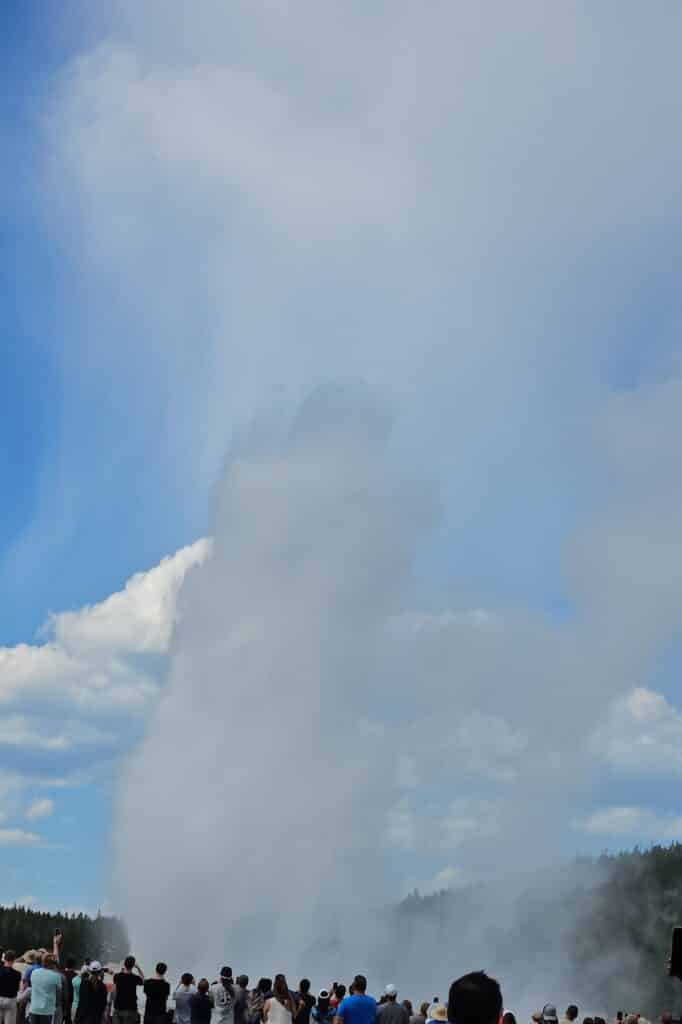
Upper Geyser Basin and Morning Glory Pool
If you have time, explore the Upper Geyser Basin from the Old Faithful area. This area contains around 150 geysers, some of which are dormant and others are unpredictable in nature. The entire loop is about 4.5 miles (7.2 kms) and is an easy trail. The furthest point from Old Faithful is Morning Glory Pool, 1.5 miles (2.41 kms) which is quite the sight. If you have time to take that walk, do so!
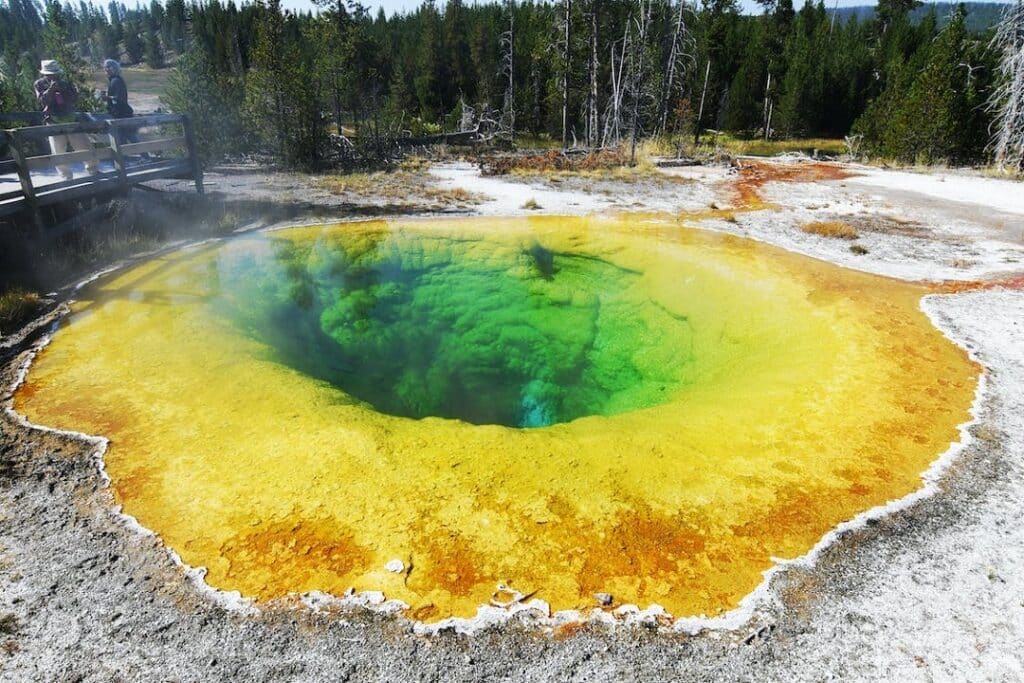
Grand Prismatic Springs
Grand Prismatic Springs, is one of the most unique natural wonders in the world and was hands down my favorite thing to see on my day trip through Yellowstone. The springs is deeper than a 10-story building and larger than a football field. The rainbow of colors will take your breath away. Take the 0.8 mile (1.3 km) walk on the boardwalk through the Midway Geyser Basin to experience the beauty of this area!
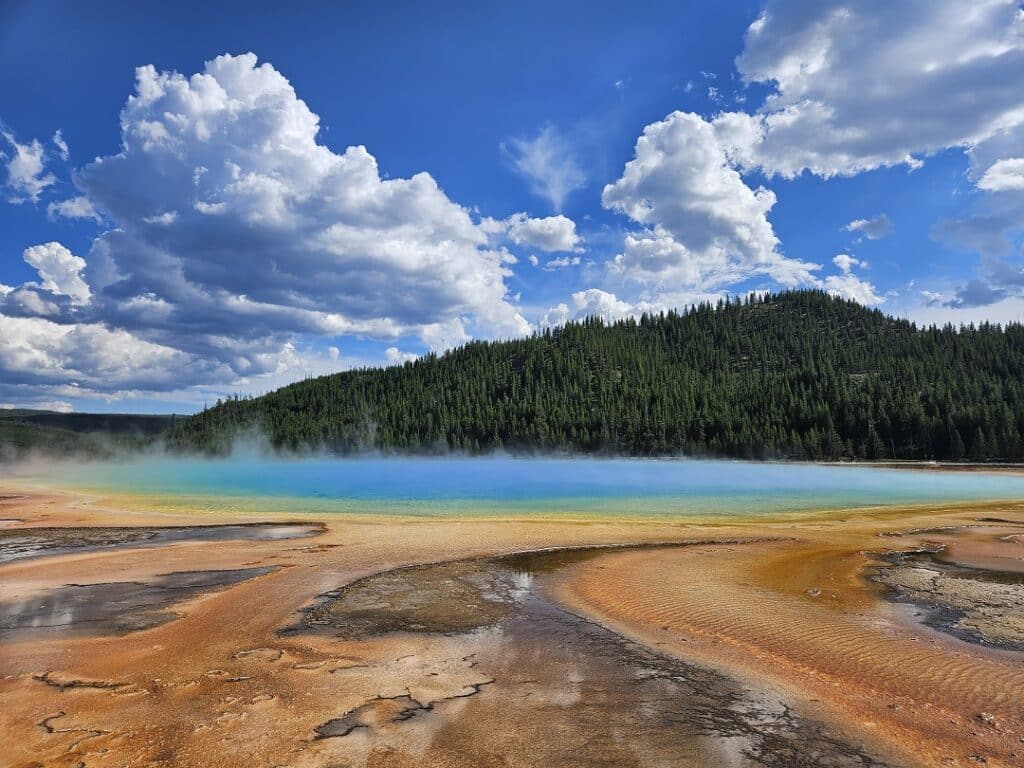
Fountain Paint Pot
The 0.5 mile (0.8 km) loop is a quick jaunt to visit the pots. The muddy pools, which occur when sulfuric acid is emitted and breaks down the surrounding stone into clay, bulge and form bubbles in an entertaining, albeit mesmerizing, display as gas bubbles erupt on the surface. It is definitely an intriguing sight to see.
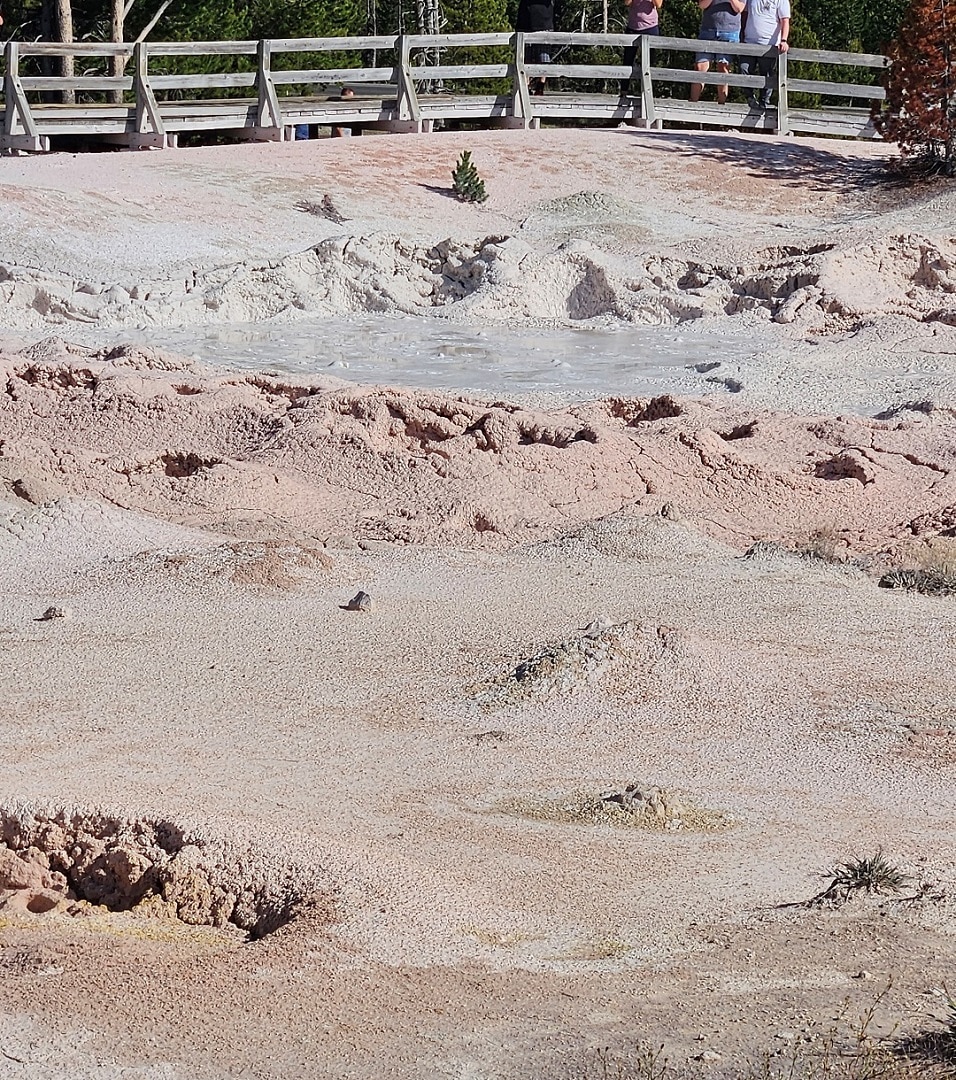
Mammoth Hot Springs
If you are entering (or leaving) from the North Entrance, Mammoth Hot Springs is an interesting site that showcases the unique geothermal formations created by hot water and minerals. The area is made up of the Lower Terrace area (at the bottom) and Upper Terrace (on the hill). It doesn’t take long to see it on foot if you venture in.
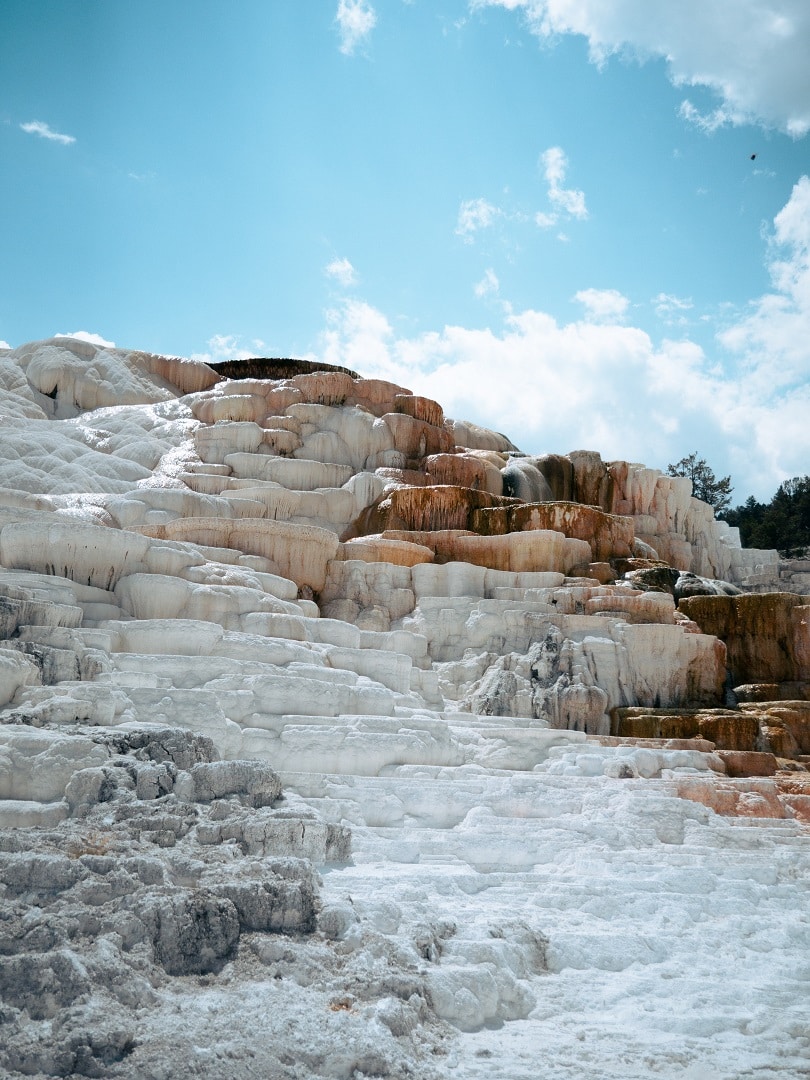
If you don’t have time to stop, you can see it from the road as you drive by. As you can see, we saw alot of elk.
Note. The drive out of Yellowstone, before you hit Mammoth Hot Springs, was a real fun drive! Trust me, it’s a great way to end the day in the park!
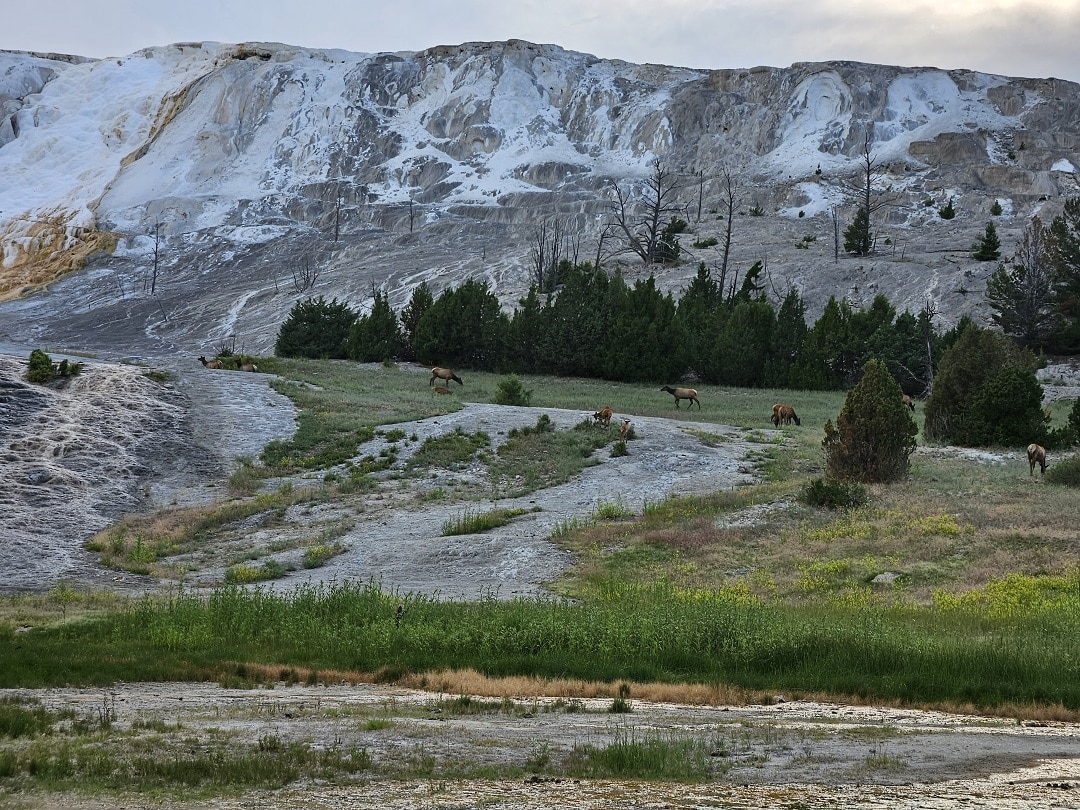
Grand Canyon of Yellowstone
The Yellowstone Canyon is over 24 miles (39 kms) long and some areas are 1,200 feet (365 metres) deep, located in the central part of the park, east of Canyon. There are many lookouts and trails along the rims of the canyon. The most popular place visited is Artist Point where you can see the famous Lower Falls.
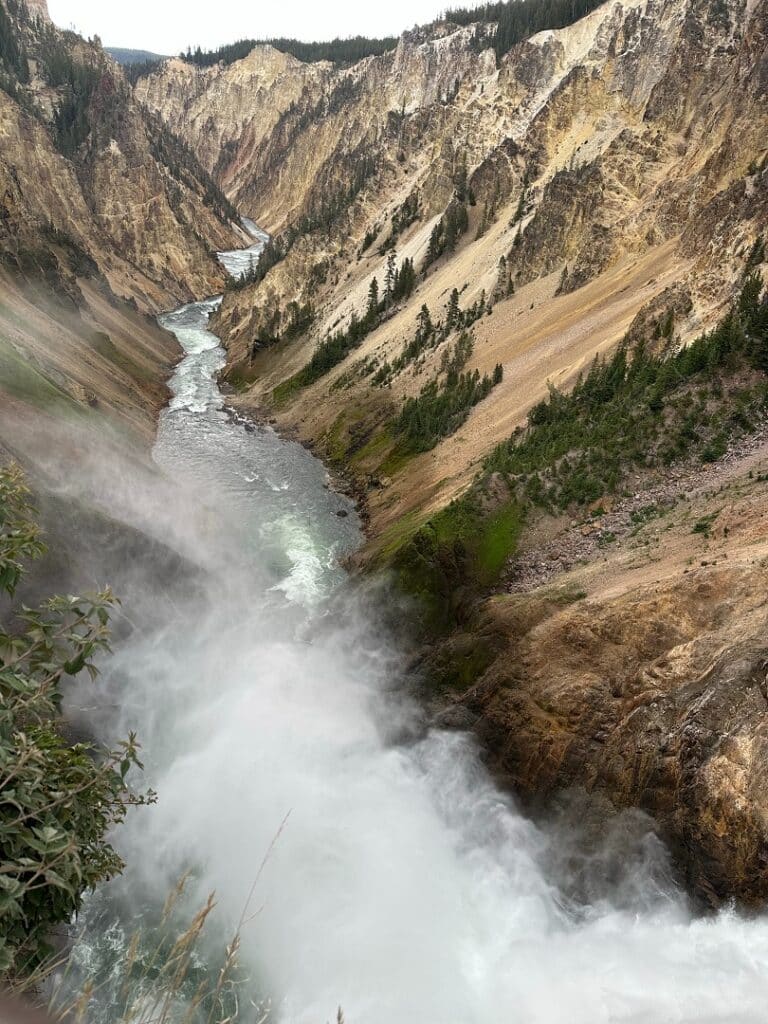
Lamar Valley & Hayden Valley
If you can make a trip towards the east side of the park, south of Canyon, you will be hit with some of the best landscapes and opportunities to see lots of wildlife, especially bison. Some people call this area the “Serengeti of North America”. If you can keep driving through, you will eventually hit a stunning view of the mountains.
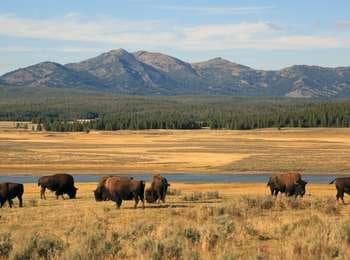
Looking for a guided tour through Yellowstone? There are lots of options for both audio and private tours with additional activities that can be done to explore the park.
Wondering where you can stay that is near Yellowstone? If you want to extend your day trip and spend a few extra days in the area, there are many options for lodging in the park, or in nearby city of Cody.
Tips For Your Day Trip Through Yellowstone
- Be prepared for changing weather; dress in layers and bring rain gear. Download a road trip packing list.
- There are many easy hikes in Yellowstone that you can partake in
- Stay on designated trails and boardwalks to protect yourself and the park’s fragile ecosystems.
- Keep a safe distance from all wildlife, especially bison and bears
- Find your connection to these natural wonders and savour every moment
While this itinerary covers some of the park’s highlights, there’s so much more to explore on a day trip through Yellowstone. If you have more time, consider spending at least a couple of days in the area to fully experience the park’s diverse landscapes, geothermal features, and wildlife.
If you are looking to plan a day trip through Yellowstone, or a longer stay in Wyoming, check out my posts on a northern Wyoming road trip and Places to Stay in Wyoming.
If you are totally excited but don’t know where to start, or need some help with planning, feel free to check out our custom planning services, so I can help you create the perfect itinerary so you can experience Wyoming and feel a connection to nature!
If you enjoyed my post, follow me on social media or subscribe to my newsletter below, so you can stay connected.



We’ve spent a lot of time in Grand Teton but have never had a chance to visit Yellowstone. The grand canyon sounds like it would be a great spot to visit.
Yellowstone is such a great national park. As a Wyoming native it is someplace we love to visit. So glad you had a good trip here.
Great information! This would be such an awesome trip. I have always wanted to visit Yellowstone. It is so beautiful! Thank you for sharing.